Ancient Dacian Gold Helmet With Piercing Evil Eyes
A. Sutherland - AncientPages.com - This golden helmet is over two millennia old and was accidentally found in Poiana Cotofenesti (now called Poiana Varbilau), southern Romania, in 1929 (or in the spring of 1928).
The Golden Helmet of Coțofenești. A Geto-Dacian helmet dating from the first half of the 4th century BC, uncovered by chance. Image credit: Radu Oltean - CC BY-SA 3.0
The helmet was found to be a remarkably well-preserved artifact (only the part of its skull cap is missing), and in this state of preservation, the artifact is 25 cm tall and weighs 770 grams. Its diameter is 13.92 mm.
The helmet's lower part is cylindrical and has the opening of the rectangular shape for the front and the ears, with outlines similar to the "U" (reversed). Both the cheekbones and the head protectors were fixed and immobile.
The parade and ritual helmet from Poiana Cotofenesti was made of two pieces of cold-rolled gold plate from a natural, unrefined gold ingot with the composition: Au = 760 ‰, Ag = 225 ‰, and Cu = 10 ‰. This Dacian helmet provided a good and stable head covering.
It was created from a relatively thick gold sheet by repeated beating on a wooden support.
A Geto-Dacian helmet dating from the first half of the 4th century BC, uncovered by chance. Graphical reconstruction by Radu Oltean. Image credit: Radu Oltean - CC BY-SA 3.0
The gold plate used for producing the Cotofanesti helmet has varying thicknesses. They range from 2.82 mm at the base to 0.76 mm in the upper area of the hold.
However, we must remember that the gold, even in the thick sheet, has a low hardness, and a helmet like this was certainly not sufficient enough to defend the battle.
The helmet was most probably a luxurious ceremonial piece to emphasize, for the bearer, his preeminent position in a more structured social or military hierarchy. A craftsman made the helmet of the local Thracian tribes of Geto-Dacians.
Helmet of Cotofenesti - A Geto-Dacian helmet dating from the first half of the 4th century BC, uncovered by chance. Mythological scene on the side. Image credit: Radu Oltean - CC BY-SA 3.0
The Getae and the Dacians were ancient Thracian peoples who lived in Moesia, on the northern plain of the river Danube, and in the Carpathian Mountains, approximately in modern-day Romania and Moldova bordered by Romania to the west and Ukraine to the north, south, and east.
Researchers have not been ale to reconstruct these ancient people's religion. However, it is known that like the religion of the ancient Celts, it represents one of the most fascinating chapters in the long history of Indo-European belief systems outside the Greco-Roman world.
The Getae and Dacians worshiped Zalmoxis, a divinity who was probably an ancient and prominent religious reformer to whom the beginnings of Getic kingship are also related. Herodotus mentions the Getae, and says that others "surrendered without a fight to Darius" but" the Getae resisted stubbornly, and were enslaved at once, the bravest and most just Thracians of all..."Histories Book IV, 93–96.
Large Eyes And Eyebrows Twisted Upwards And Their Symbolic Meaning
So the Helmet of Cotofenesti may also have been the sacred helmet of Zalmoxis, the living god-prophet of the Dacians, or belonged to an unknown, aristocratic warlord or a Geto-Dacian king, the head of a local political formation formed in the area at the end of the 5th or the beginning of the 4th century BC.
As such, it was declared the treasure of a tribe chief or even a union of tribes.
Unique image from movie Dacii showing Decebalus wearing an incorrectly restored version of the Helmet of Coţofeneşti. (1967 Dacii movie by Sergiu Nicolaescu) - source
The helmet is decorated with many conical rosettes arranged in horizontal rows, a scene of the sacrifice of a ram, and two divided registers depicting mythical creatures.
The frontal part of the helmet is rectangular and decorated with two large eyes and eyebrows twisted upwards.
These eyes are the most striking decorative element of the helmet, supposedly having the power to avert evil influences, bad luck, and magic spells.
The intriguing eyes could also symbolize: "I see twice as well; I have eyes like my hawk."
The artifact is now kept at the National History Museum of Romania.
Written by – A. Sutherland - AncientPages.com Senior Staff Writer
Updated on April 9, 2023
Copyright © AncientPages.com All rights reserved. This material may not be published, broadcast, rewritten or redistributed in whole or part without the express written permission of AncientPages.com
Expand for referencesMore From Ancient Pages
-
 Secrets Of Ancient Underwater City Pavlopetri Revealed – Travel Back In Time And See What The City Looked Like!
Archaeology | Mar 1, 2014
Secrets Of Ancient Underwater City Pavlopetri Revealed – Travel Back In Time And See What The City Looked Like!
Archaeology | Mar 1, 2014 -
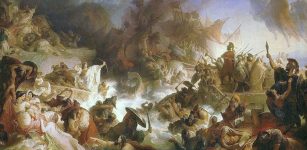 On This Day In History: Battle of Salamis Was Fought – On Sep 22, 480 BC
News | Sep 22, 2016
On This Day In History: Battle of Salamis Was Fought – On Sep 22, 480 BC
News | Sep 22, 2016 -
 Chilling Graffiti Found In 1,600-Year-Old Roman Prison In Corinth, Greece
Archaeology | Aug 19, 2024
Chilling Graffiti Found In 1,600-Year-Old Roman Prison In Corinth, Greece
Archaeology | Aug 19, 2024 -
 Impressive Huge Ancient Lamassu Statue Unearthed In Nineveh, Iraq
Archaeology | Oct 28, 2023
Impressive Huge Ancient Lamassu Statue Unearthed In Nineveh, Iraq
Archaeology | Oct 28, 2023 -
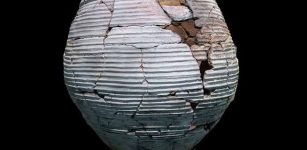 Unknown Purpose Of The Mysterious Huge Iron Age Ceramic Sharjah Jar Puzzles Scientists
Archaeology | Oct 7, 2022
Unknown Purpose Of The Mysterious Huge Iron Age Ceramic Sharjah Jar Puzzles Scientists
Archaeology | Oct 7, 2022 -
 Mysterious Giant Rock Face Discovered On B.C’s Central Coast – Natural Or Man-Made Structure?
News | Mar 28, 2020
Mysterious Giant Rock Face Discovered On B.C’s Central Coast – Natural Or Man-Made Structure?
News | Mar 28, 2020 -
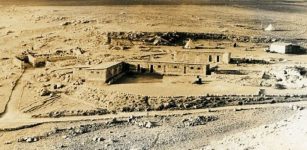 The Assyrian Siege Ramp And Breached Walls At Canaanite City Of Lachish – Studied
Archaeology | Nov 10, 2021
The Assyrian Siege Ramp And Breached Walls At Canaanite City Of Lachish – Studied
Archaeology | Nov 10, 2021 -
 A 4.4 Million-Year-Old Hand Of ‘Ardi’ Has Some Clues On Humans’ Upright Walking
Fossils | Feb 25, 2021
A 4.4 Million-Year-Old Hand Of ‘Ardi’ Has Some Clues On Humans’ Upright Walking
Fossils | Feb 25, 2021 -
 ‘Yunatsite’ And Thought-Provoking Theory That Balkan Peninsula And Not Mesopotamia Was The Cradle Of Civilization
Featured Stories | Feb 14, 2023
‘Yunatsite’ And Thought-Provoking Theory That Balkan Peninsula And Not Mesopotamia Was The Cradle Of Civilization
Featured Stories | Feb 14, 2023 -
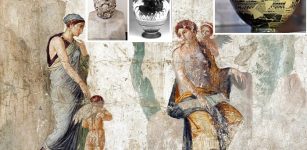 Aphrodite Signified More Than Beauty – Five Other Realms In Which The Greek Goddess Also Reigned
Featured Stories | Sep 18, 2024
Aphrodite Signified More Than Beauty – Five Other Realms In Which The Greek Goddess Also Reigned
Featured Stories | Sep 18, 2024 -
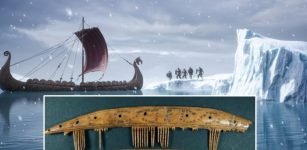 Vikings’ Long Distance Trade Reached The Arctic – Deer Antler Combs Reveal
Archaeology | Sep 19, 2023
Vikings’ Long Distance Trade Reached The Arctic – Deer Antler Combs Reveal
Archaeology | Sep 19, 2023 -
 Oldest Human Made Architectural Plans Detail Mysterious Desert Megastructures
Archaeology | May 18, 2023
Oldest Human Made Architectural Plans Detail Mysterious Desert Megastructures
Archaeology | May 18, 2023 -
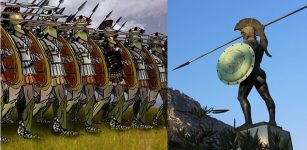 Sparta And Legendary King Leonidas: The Heroes Of Thermopylae
Featured Stories | Jul 18, 2018
Sparta And Legendary King Leonidas: The Heroes Of Thermopylae
Featured Stories | Jul 18, 2018 -
 Why Were Ancient ‘Puppet’ Figurines Placed Atop A Pre-Columbian Pyramid In El Salvador?
Archaeology | Mar 5, 2025
Why Were Ancient ‘Puppet’ Figurines Placed Atop A Pre-Columbian Pyramid In El Salvador?
Archaeology | Mar 5, 2025 -
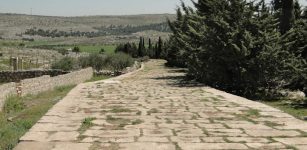 Roman Roads Laid The Foundation For Modern-Day Prosperity – New Study Claims
Archaeology | Nov 16, 2022
Roman Roads Laid The Foundation For Modern-Day Prosperity – New Study Claims
Archaeology | Nov 16, 2022 -
 The Faery Grail Of Hospitality And Accord- The Forgotten Story – Part 1
Ancient Mysteries | Sep 25, 2019
The Faery Grail Of Hospitality And Accord- The Forgotten Story – Part 1
Ancient Mysteries | Sep 25, 2019 -
 Bees Originated From An Ancient Supercontinent Millions Of Years Earlier Than Previously Thought
Evolution | Jul 31, 2023
Bees Originated From An Ancient Supercontinent Millions Of Years Earlier Than Previously Thought
Evolution | Jul 31, 2023 -
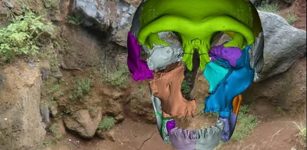 Unusual 300,000-Year-Old Jawbone May Belong To An Unknown Vanished Human Lineage
Archaeology | Dec 18, 2023
Unusual 300,000-Year-Old Jawbone May Belong To An Unknown Vanished Human Lineage
Archaeology | Dec 18, 2023 -
 Scathach – The Shadowy One – Legendary Martial Arts Teacher Who Trained Cuchulainn And Other Warriors
Featured Stories | Mar 4, 2019
Scathach – The Shadowy One – Legendary Martial Arts Teacher Who Trained Cuchulainn And Other Warriors
Featured Stories | Mar 4, 2019 -
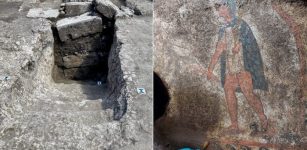 Extraordinary Painted Tomb Belonging To A Mercenary Warrior Found At Pontecagnano Necropolis
Archaeology | Oct 28, 2023
Extraordinary Painted Tomb Belonging To A Mercenary Warrior Found At Pontecagnano Necropolis
Archaeology | Oct 28, 2023




